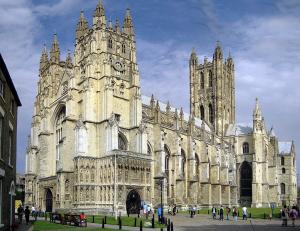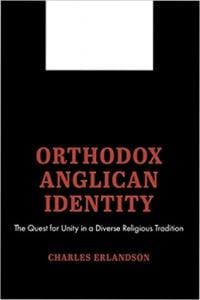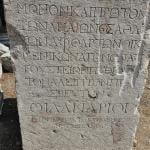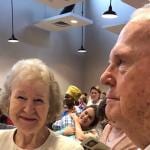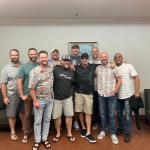 How I Became an Anglican
How I Became an Anglican
The conversion narratives of people who have become Roman Catholics or Orthodox Christians are filled with people courageously and passionately seeking “The True Church.” I wish I could tell you such a glowing conversion narrative in telling you how I became an Anglican. I also wish I could tell you an exciting story about how I became a Christian. I was tempted for a moment to pass off as my own Mike Warnke’s bogus story about having white hair and six inch fingernails and a Satanic ring of 1500 members I once led. But instead, you’re stuck with my real story, in hopes that the story God has written is sufficiently glorious for Him.
The good news is that I’ve never known a moment when I didn’t believe in God and in Jesus Christ, and I haven’t had a real moment of doubt. I know: it’s not very glamorous. But I see it as a kind of miracle in slow motion, this fact that God has always had me in His hand and has never let me go.
I grew up mostly in Bible churches and in a good Christian home where I got a well-grounded sense of God and a strong love of God’s Word. I never really thought about other church traditions much until college or even after. But I remember as a kid having a translucent attraction to Roman Catholicism. I grew up not even being sure Roman Catholics were true Christians because of their many errors. And yet there was something beautiful and mysterious that I saw through a glass darkly.
My first real test of exploring a different church tradition came when I graduated from college in 1983 and decided to live in Humble, Texas with my older brother, Paul. We were pretty sure we weren’t going to go the local Southern Baptist Church, after they tried to palm off on us some literature from that great Baptist theologian: Jimmy Swaggart. By that time we were both staunch Calvinists, and we wanted, if possible, to find a Calvinistic church. What helped us make our decision was a group of people carrying signs reading, “H.E.L.P. – Humble Evangelicals to Limit Poverty.” We grew up in a home where we cared about the poor and civil rights and the Democrat Party (we later had a conversion to Republicanism). We found out about the church involved in H.E.L.P. and decided to visit Believer’s Fellowship one Sunday. George Grant, who has since gone onto bigger and better things, was the pastor at the time, and Kemper Crabb led the music.
We discovered pretty quickly that the church was not only Calvinistic but strongly so. In fact, Believer’s Fellowship turned out to be a Reconstructionist church that had a lot of literature fromTyler,Texasby guys like Gary North, Ray Sutton, and David Chilton. Theologically and liturgically, Believer’s Fellowship was a half a step behind the Reconstructionist Mecca of Tyler, in whose direction we bowed 5 times daily (not really – just checking to make sure you’re still reading). We began reading about church history, economics, politics, and were gun-ho to change the world for Christ.
At that time, the church inTylerand Believer’s Fellowship were both becoming more liturgical. Elements of the Book of Common Prayer were introduced into the worship, something which has shaped me forever. It got into my blood, even before I knew what hit me. It wasn’t until years later that I began to understand why we did what we did.
In 1988 I moved to Mecca (Tyler) to teach at Good Shepherd School. Within a few months, the church had voted to join the Reformed Episcopal Church. I had come for the Reconstructionist theology but stayed for the Anglicanism. Good Shepherd Church experienced a painful transformation from being a Reconstructionist church to being an Anglican one. I made the transition with them, beginning to see not only the lacks and immaturity of Reconstructionism but also the profundity and fullness of Anglicanism.
I’m not sure just why I stayed to become an Anglican. I’m not even sure at what point I became dedicated to becoming an Anglican instead of something else. This seems strange for someone who’s now studied theology, church history, has a Ph.D. in Religious Studies, and who wrote his Ph.D. dissertation on Anglican identity. But what it shows is that people don’t all arrive at their religious identity for the same reason. Some choose to remain whatever their parents were. Some come to a particular church for social reasons and decide to adopt the church tradition of the church that welcomed them. Others dedicate themselves to finding TTC (The True Church) and morph over time from being Evangelical to being Reformed to being Anglican to being Roman Catholic or Orthodox, or follow some other trajectory.
But God worked differently in my life. He brought me to a vibrant church in Tyler that wanted to see God’s Word fully lived out in every area of life. It was a church full of koinonia, body life, and a dedication to theology and practical action in its community. And it just so happened to be using parts of the Prayer Book. That gave me a powerful vision for what a church could be, which led me to another wonderful church – Good Shepherd.
For me, I came to these churches first for something else – a Calvinistic theology worked out in faithful practice in every area of life – but was introduced to Anglican worship and later an Anglican ethos. My life since about 1993 has been one long pursuit of God as He has incarnated Himself into the Anglican tradition. I’ve struggled at times to understand it all, but God has been good and has led me gently into an ever deepening understanding of Himself and His Kingdom, as I’ve been challenged to see if I think Anglicanism is the most faithful reflection of the Church. So far, I have.
Having done this primarily in the Reformed Episcopal Church as expressed in GoodShepherdChurchin Tyler, Anglicanism has become an inseparable part of who I am. I teach at an Anglican classical school where all 5 of my kids attend (the same school I originally came to Tyler for in 1988); I married my wife at Good Shepherd (after having led a book study at Good Shepherd on Jim Jordan’s book Through New Eyes); most of my kids were baptized there; I was ordained there twice and now serve as the assistant rector; I obtained a Ph.D. in Anglicanism; and I teach at an Anglican seminary (Cranmer House).
As with most other things in my life, God has taken the slow, steady, organic way of growing me as an Anglican. Everyone comes to Christ as He incarnates Himself in particular church traditions. I rejoice to say that Christ has come to me not exclusively but especially through Anglicanism.
Photo: Pilgrimage on Wikipedia


